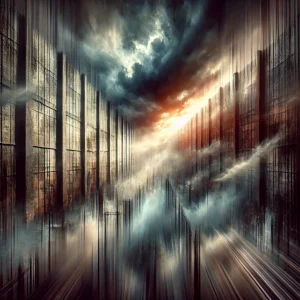Introduction to Attack on Titan Season 3

So, what makes "Attack on Titan" Season 3 so unique? Well, for starters, this season dives much deeper into the political landscape within the Walls, giving fans a fresh perspective on the world beyond just battling Titans. If you’ve been following the series, you know it’s not just about fighting massive creatures. Season 3 really pulls back the curtain on the internal conflicts among humanity, revealing layers of corruption, betrayal, and secrets that have been buried for years.
Fans were buzzing with anticipation when this season was announced. Why? Because they knew something big was coming, and it didn’t disappoint. Unlike previous seasons, which focused heavily on action, Season 3 takes a more complex approach to storytelling. The plot thickens with political intrigue, and you can feel the tension build with every episode. Characters are forced to confront not just Titans but also their own beliefs and loyalties. Eren, Mikasa, and Levi all go through significant growth, which adds so much depth to their characters.
This season also introduces some shocking twists that left the fanbase reeling. The truth behind the Titans and the history of the Walls comes to light, flipping everything we thought we knew on its head. It’s no wonder that Season 3 is often hailed as one of the best in the series. And let’s not forget about the animation quality—Studio WIT truly outdid themselves. The breathtaking visuals during key battles, combined with intense character moments, make it impossible to look away.
Fans couldn’t stop talking about it when it aired. Social media was flooded with reactions, theories, and discussions about what was coming next. The combination of high stakes, emotional depth, and stunning animation made "Attack on Titan" Season 3 a must-watch for anime lovers around the globe. The anticipation was real, and the delivery? Even better.
Plot Overview and Key Story Arcs

Alright, let's dive into the key events of Attack on Titan Season 3. If you thought the previous seasons were intense, this one takes it up a notch by shifting its focus from non-stop action to a more intricate storyline. This time around, the story gets political—literally. Instead of just facing Titans, the Survey Corps finds themselves entangled in the power struggles within the Walls. You can feel the tension as they uncover dark secrets about the government, and believe me, it's not what they expected.
So, what are the major events? The story kicks off with the Survey Corps going underground—no, not physically, but figuratively. They’re on the run after discovering that the monarchy has been hiding the true nature of the Titans and the Walls for years. The big twist? The Reiss family, who secretly control the government, holds the key to humanity’s lost memories. This revelation throws everything into chaos, and the Survey Corps must decide whom to trust. It’s a whirlwind of betrayals, political maneuvering, and shocking truths that completely shift the tone of the series.
But don’t worry, the Titans aren’t gone. Far from it! Alongside the political drama, the Beast Titan reappears, and this mysterious figure continues to wreak havoc. His involvement adds even more layers to the story, as his origins and motives are finally explored in greater detail. And then, of course, there’s the showdown at Shiganshina District, one of the most epic battles in the series. The stakes are higher than ever, and the emotional weight behind every decision the characters make adds a whole new level of intensity.
You can also sense a shift in the overall tone of the show. Where earlier seasons were more focused on survival against the Titans, Season 3 delves into the question of what humanity is fighting for. Is it just survival? Or is there something more? The deeper exploration of the world and its history gives the series a new depth, making you rethink everything you thought you knew. It’s not just about fighting anymore—it’s about uncovering the truth, no matter how painful it may be.
The blend of political intrigue and action-packed battles keeps viewers on the edge of their seats. Every episode feels like a rollercoaster of emotions, from despair to hope, making Attack on Titan Season 3 one of the most gripping arcs in the series.
Character Development and New Revelations

Let’s talk about character development in Attack on Titan Season 3. If you’ve been following Eren, Mikasa, and Levi since the beginning, this season offers a lot to chew on. Eren, for one, goes through a major transformation. He’s no longer the impulsive, hot-headed kid driven purely by revenge. Instead, Season 3 shows a more reflective side of him. He starts to question the nature of freedom, his role in humanity’s future, and whether his actions have truly been for the greater good. You can see him struggle with the weight of his newfound knowledge about the Titans and the truth behind the Walls. It’s like he’s carrying the world on his shoulders—literally and figuratively.
Mikasa, on the other hand, continues to be a strong and stoic presence, but there’s more vulnerability beneath the surface in this season. Her unwavering loyalty to Eren gets tested as the secrets start to unravel, and she’s forced to confront the harsh reality that even her closest ally might not have all the answers. Yet, through it all, Mikasa’s resolve never wavers, and that makes her one of the most compelling characters in the series.
And then there’s Levi. Season 3 really shines a spotlight on him, particularly with his connection to Kenny Ackerman, a new character who plays a huge role in uncovering the mystery of Levi’s past. This relationship adds layers to Levi’s character that we hadn’t seen before. It’s no longer just about his skills as humanity’s strongest soldier. We get to see his emotional struggles and the personal demons he’s been battling for years. His arc in Season 3 makes him not only a fierce warrior but also a deeply complex individual with a tragic backstory.
Speaking of new characters, let’s not forget about Historia Reiss. Her role expands significantly in this season as she transitions from being a side character to a central figure in the story. Historia’s development is fascinating as she grapples with her true identity as the rightful heir to the throne and the burden that comes with it. Watching her evolve from a seemingly passive character to someone who takes control of her destiny is one of the season’s standout moments. She represents the theme of personal growth and the fight for autonomy that resonates throughout the series.
In addition, Kenny Ackerman’s introduction brings a whole new dynamic to the narrative. His ties to both Levi and the royal government make him a crucial piece of the puzzle, and his presence forces other characters to confront the complexities of power and loyalty. Through him, we learn more about the history of the Ackerman clan and their special abilities, which adds depth not just to Levi but to the world of Attack on Titan as a whole.
Season 3 is a turning point for these characters, pushing them to confront their pasts, question their futures, and ultimately redefine who they are. It’s character-driven storytelling at its best, making this season an emotional rollercoaster for both the characters and the viewers.
Themes and Symbolism in Season 3
![]()
Now, let’s dive into the themes and symbolism in Attack on Titan Season 3. One of the most prominent themes this season is freedom. But here’s the catch—freedom isn’t as simple as it sounds in this world. The characters, especially Eren, start to question what freedom really means. Is it the ability to live without fear of the Titans? Or does it go deeper, to something more personal and philosophical? As Eren learns more about the world beyond the Walls, he realizes that true freedom might be an illusion. This theme runs throughout the season, influencing the characters' decisions and the unfolding narrative.
Another key theme is sacrifice. From the beginning, Attack on Titan has been about the sacrifices humanity makes to survive, and Season 3 really hammers this point home. Whether it’s individual characters making the ultimate sacrifice for their comrades, or entire factions sacrificing their morals for what they believe is the greater good, the idea of giving something up for the sake of others is everywhere. The Survey Corps, for example, faces impossible choices where lives are on the line, and these sacrifices are often portrayed as necessary, yet tragic, parts of their world.
But here’s where things get even more interesting: the blurred lines between good and evil. Season 3 doesn’t just show us heroes versus villains. Instead, it forces us to question who’s really in the right. The government within the Walls is corrupt, but are their actions entirely unjustified? The Titans are terrifying monsters, but are they simply victims themselves? Characters like Zeke and Historia find themselves in morally gray areas, and the show makes it clear that in a world as harsh as this, good and evil aren’t always black and white. This blurring of lines makes the story even more compelling, as viewers are left to decide for themselves what’s right and wrong.
Symbolism also plays a huge role in enhancing the storytelling. Take the Walls, for example. On the surface, they’re just a physical barrier protecting humanity from the Titans, but symbolically, they represent the restrictions placed on the characters’ lives. The Walls are both a shield and a prison, reflecting the limitations on freedom that the characters grapple with throughout the series. Another powerful symbol is the key that Eren carries, which represents not just the secrets hidden in the basement but also the idea of unlocking the truth. The key is a constant reminder of the mysteries yet to be solved and the lengths the characters will go to uncover them.
Even the Titans themselves can be seen as symbolic. They embody fear and the unknown, but as Season 3 progresses, it becomes clear that they also represent the consequences of humanity’s actions—mistakes made in the past that have come back to haunt them. This adds a layer of depth to the conflict, turning the Titans into more than just mindless threats but into symbols of the cyclical nature of violence and power.
Through its use of symbolism and exploration of these key themes, Attack on Titan Season 3 takes the story to new heights, making it not just a thrilling adventure but a thought-provoking narrative that challenges both its characters and viewers.
Fan Reactions and Cultural Impact

When Attack on Titan Season 3 hit the screens, the fanbase was all in. The anticipation had been building for months, and once it aired, it became clear that the wait was worth it. Fans couldn’t stop raving about the new season, and social media was buzzing with reactions after every episode. Whether it was the shocking twists or the emotional character moments, the anime community embraced Season 3 with open arms. You could see passionate discussions in comment sections, forums, and even fan art exploding all over the internet. The mix of political intrigue, epic battles, and deep character development struck a chord with both long-time fans and newcomers alike.
But it wasn’t just the fans who were impressed—critics also had a lot to say. Many praised Season 3 for its more mature storytelling. The shift from relentless action to a more nuanced exploration of the world within the Walls was seen as a bold move that paid off. Reviewers highlighted the strong writing, the attention to detail, and, of course, the stunning animation that brought the intense fight scenes and emotional moments to life. The animation quality, particularly during the high-stakes battles, left both fans and critics in awe. Studio WIT’s dedication to maintaining a high standard of visual excellence did not go unnoticed.
Now, let’s talk about the cultural impact. Attack on Titan wasn’t just another anime—it became a phenomenon. In Japan, the series had already made waves with its earlier seasons, but Season 3 solidified its place as one of the most influential anime of the decade. The themes of freedom and sacrifice resonated deeply with viewers, reflecting societal concerns and sparking conversations beyond the show itself. You couldn’t walk into a bookstore without seeing shelves lined with Attack on Titan manga, and the show’s iconic imagery was everywhere—from posters to merchandise, to collaborations with major brands.
Internationally, Attack on Titan Season 3 continued to build on the series’ global success. The show broke through language barriers and became a staple in anime communities worldwide. Fans across the globe connected over their shared love of the series, discussing theories, dissecting episodes, and eagerly awaiting the next installment. The cultural crossover was undeniable—Attack on Titan became a gateway for many viewers into the broader world of anime, bringing in new fans who may not have previously been interested in the genre. It’s no exaggeration to say that Attack on Titan played a key role in the anime boom of the 2010s, helping to shape the way the medium is viewed and appreciated today.
The blend of complex themes, memorable characters, and jaw-dropping action scenes turned Season 3 into more than just a continuation of the story. It became a cultural touchstone, influencing not only anime fans but the entertainment industry as a whole.
